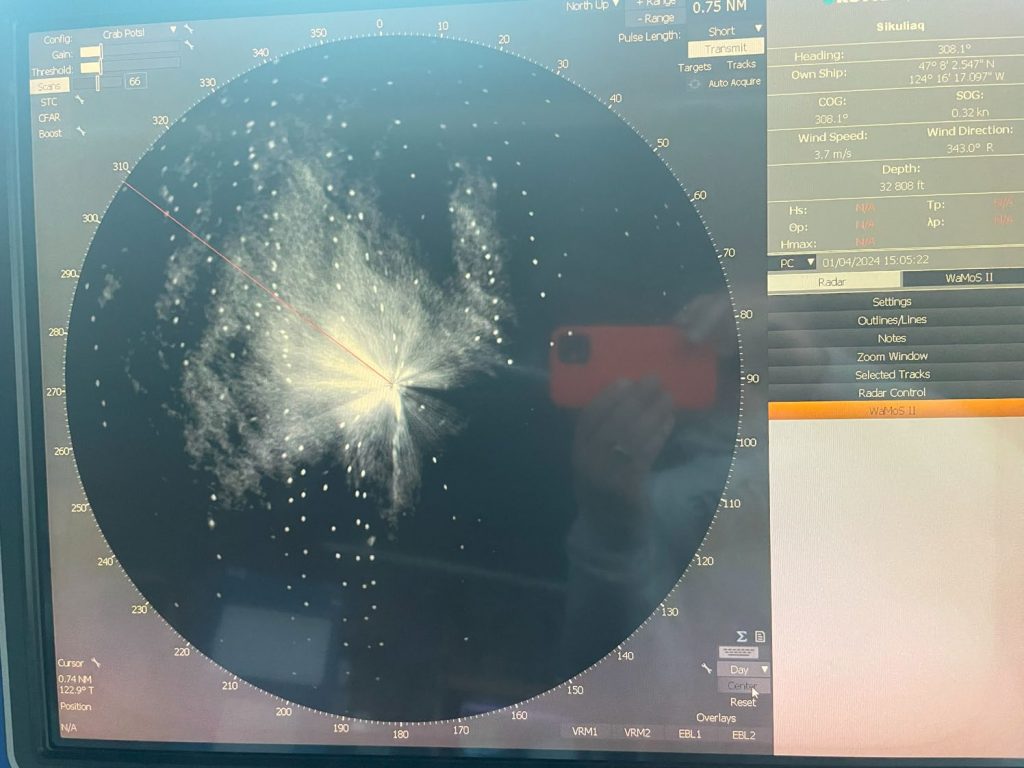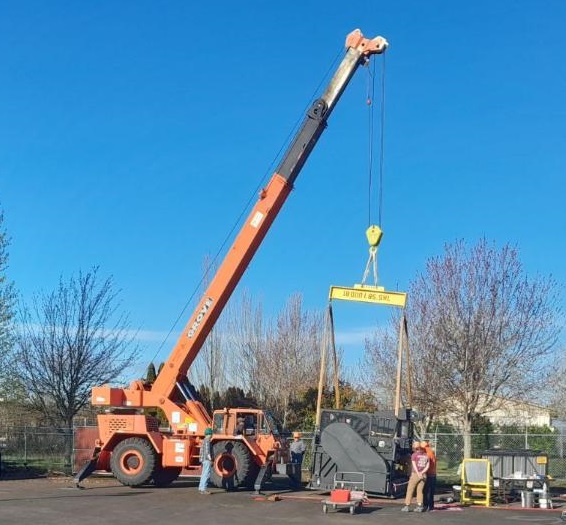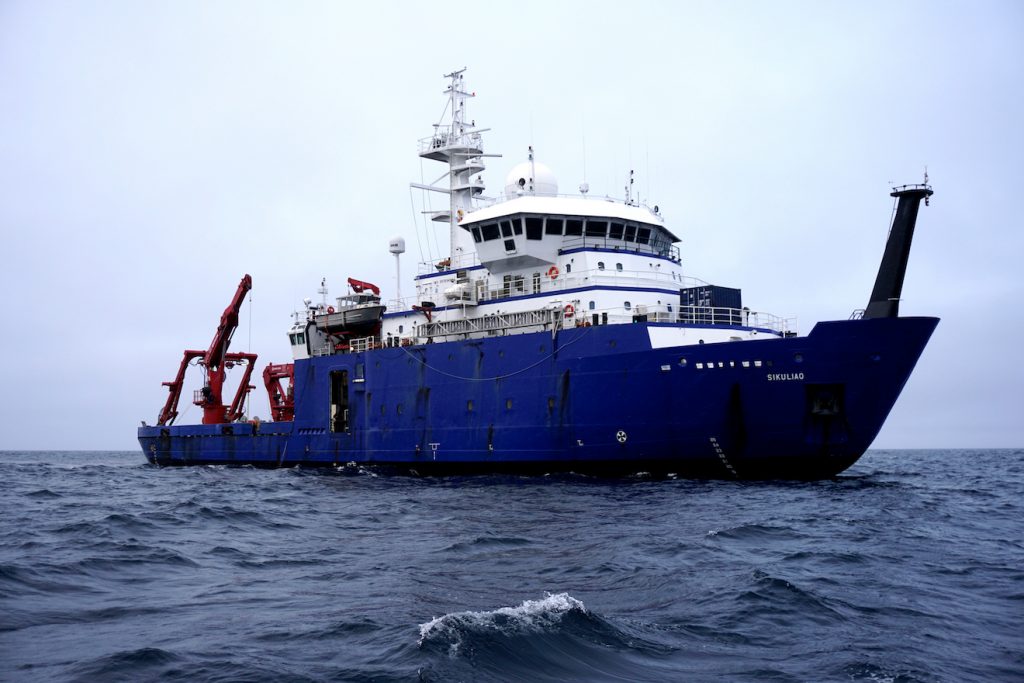Endurance 20
Crabs Galore
Image of crab pots surrounding the ship as the R/V Sikuliaq and the Endurance 20 team were adjacent to the Washington Inshore Surface Mooring. The primary purpose of this radar is to detect sea ice, but it works well on crab pot floats too. The circle’s radius is ¾ nm.
Read MoreNew Pier!
The NSF-OOI Endurance Array team from Oregon State University is proud to be mobilizing from OSU’s newly renovated pier. The light-colored concrete in the picture shows the area over the pylons that were replaced. Next to the causeway, the crew of the R/V Sikuliaq is fishing out a large log from the water. Go Beavs!
Read MoreMobilization Underway
The Endurance 20 team took advantage of the good weather to load most of what was needed for the first leg of the National Science Foundation Ocean Observatories Initiative Endurance Array 20 expedition. Most of the day was spent installing and tension testing two large winches: a Heavy Lift Winch and the UNOLS West Coast…
Read MoreHeavy Winch Test
In preparation for the Endurance 20 expedition, the heavy winch to be used in recovery and deployment operations on the R/V Sikuliaq, is lifted in the yard at the Ocean Observing Center in Corvallis. The heavy winch will be loaded on a tractor trailer for transport to the newly renovated Oregon State University Pier in…
Read MoreR/V Sikuliaq
The 261-foot R/V Sikuliaq is one of the most advanced university research vessels in the world, capable of breaking ice up to 2.5 feet thick.
Pronounced [see-KOO-lee-auk], the vessel is owned by the National Science Foundation and operated by the College of Fisheries and Ocean Sciences at the University of Alaska Fairbanks, as part of the U.S. academic research fleet.
Read More



